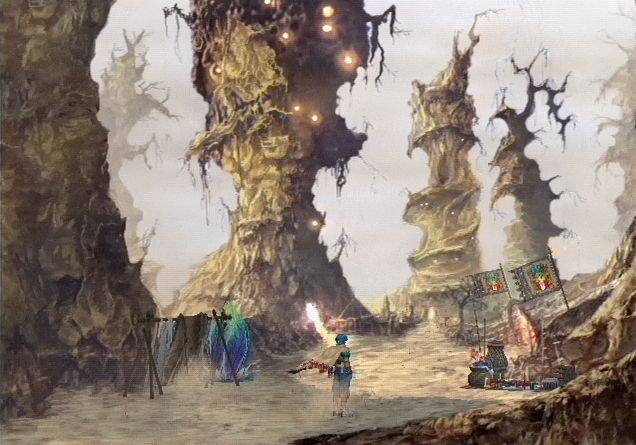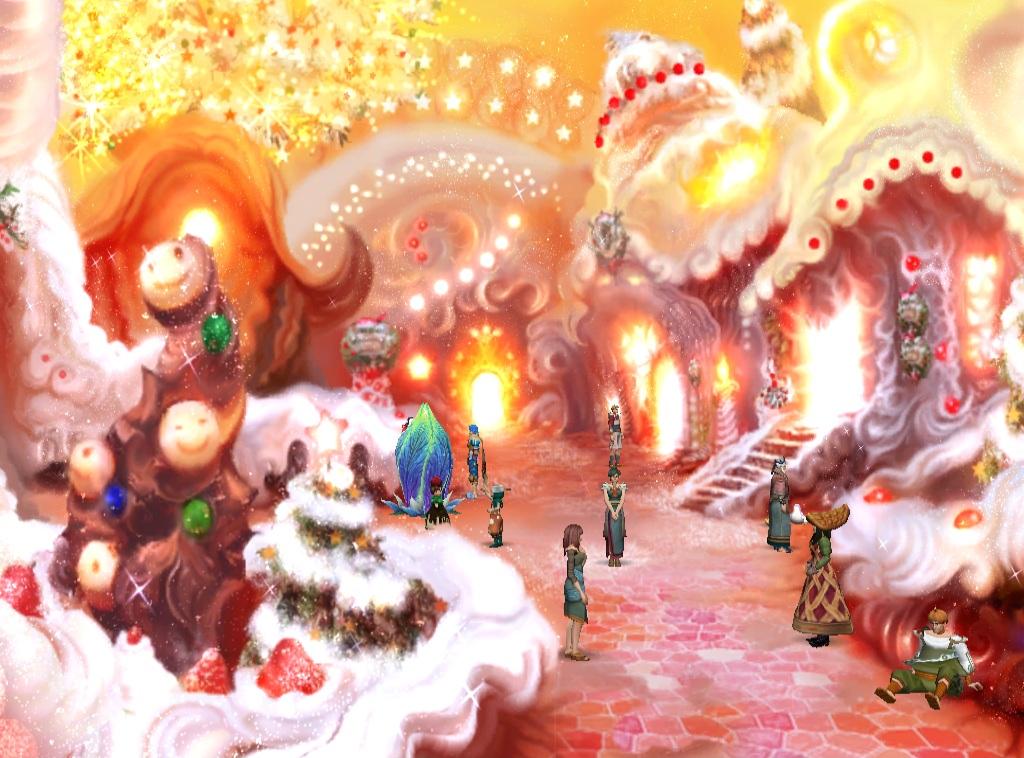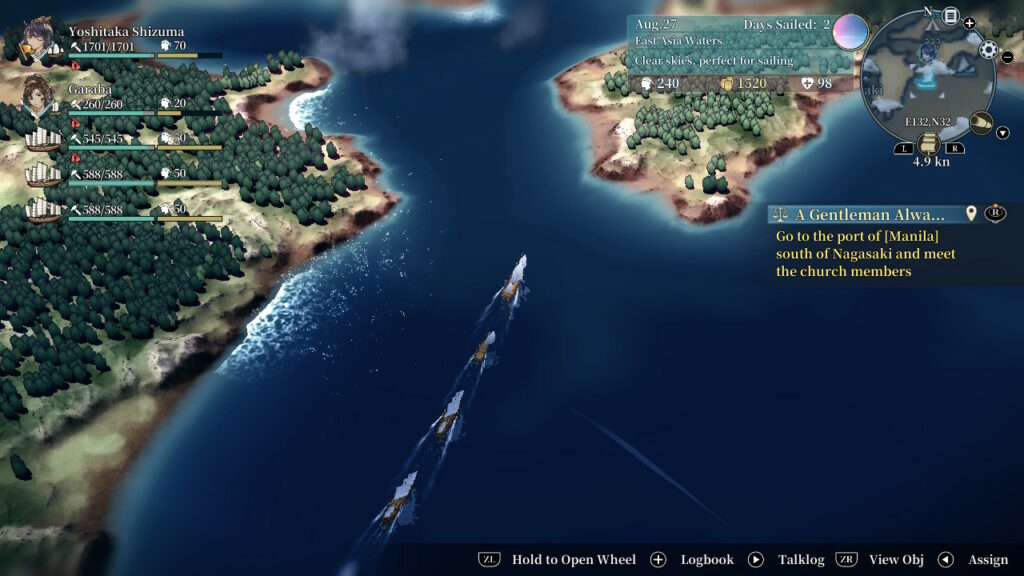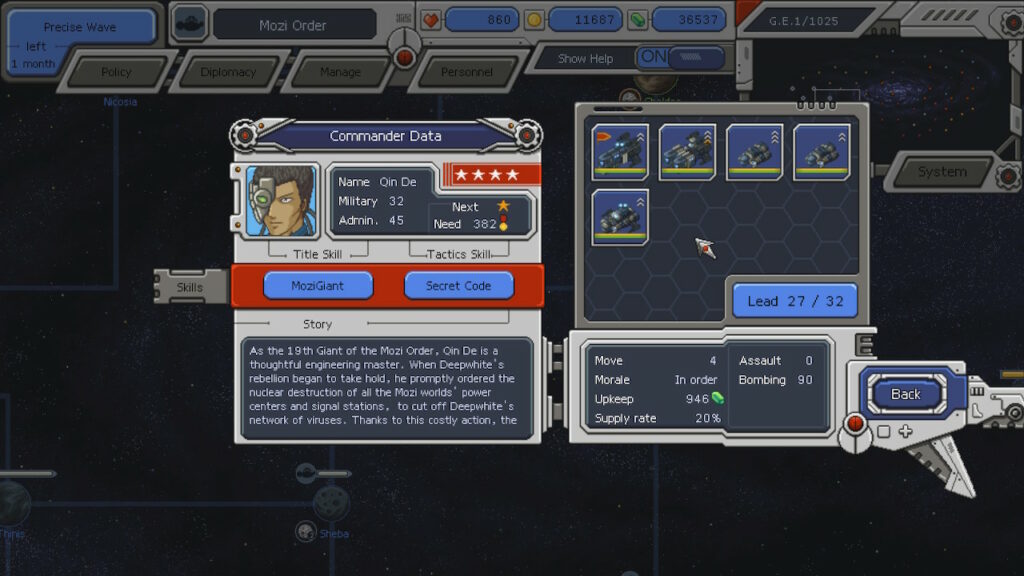Baten Kaitos is one of the few RPGs exclusive to the Gamecube, and it has a sort of middling reputation. I hear practically nothing about it, aside from the occasional “What under-appreciated RPG would you recommend” thread on this or that forum. For that matter, I didn’t even know that there were two Baten Kaitos games (Eternal Wings and the Lost Ocean, as well as Origins) until fairly recently. Origins was made second and is rarer (generally considered “better” as well).
Throughout this review, I refer to BK: EWatLO as “Baten Kaitos” for simplicity. I have not yet played Origins.
Baten Kaitos was made by Monolithsoft and Tri-Ace working together. When you look at each pedigree, you might understand why many find it interesting:
- Monolithsoft: (largely consists of developers who worked on): Xenogears, Xenosaga, went on to make Xenoblade
- Tri-Ace: Star Ocean series, Valkyrie Profile, Tales series
So you have Monolithsoft to build an over-arching world with an impressive history as well as the tortured history of the protagonist, and Tri-Ace to make all other standard RPG stuff interesting.
Tri-Ace’s focus was clearly the Magnus system. You accumulate cards which represent weaponry, spells, items, and so on. Each character has their own deck (which grows as the game progresses) into which you put the cards you find. During battle, each character is dealt their initial hand of cards with which to take actions – for example, you might get a hand including a couple of weapons with numbers in sequence. If one is played after the other, bonus damage is dealt. As far as mechanics go, Baten Kaitos is perfect at introducing the system to the player. Initially only two cards can be played in sequence, and each card has only one number to pay attention to. As the game progresses, you find cards with multiple numbers, your deck size increases, and you have to start paying attention to the element of the cards that you include to avoid inadvertently cancelling out your damage. Some exotic (and honestly sort of pointless) static effects make keeping track of the numbers harder.
Artistically, Baten Kaitos impresses as well – showing Monolithsoft’s talents. The world consists of a half-dozen (ish) floating islands, with the denizens of these islands eking out a living in a different way on each. The overarching back-story tells of an ancient war with an evil god, and how he was sealed away at the cost of “the Ocean”. It should come as no surprise that by the end of the game you discover the meaning behind the back-story in the course of visiting all the islands.

What is most impressive about the artwork in Baten Kaitos is the design for each of the towns. Many of them are fairly bland (especially early on), but some of the towns have a unique look to them that no other game has quite captured. Each is beautifully drawn, often with some kind of movement in the background as well. The town themes are likewise the best music the game has to offer (in a score that is otherwise somewhat bland and repetitive).

As someone who looks for new and interesting worlds to explore in my games, this is where Baten Kaitos shines the most. It is unfortunate that many of the towns are much smaller than they should be, and that the game focuses so heavily on combat, leveling mechanics, and collecting random items for side-quests.
Other than the two features – mechanics and atmosphere – I cannot really recommend Baten Kaitos. The voice acting is so-so, with a few good characters (mostly Gibari) rounding out the somewhat bland performances put on by the rest. All voices, without exception, sound like they were recorded inside a deep well, which I have heard blamed on the compression of the voice work. Outside of combat, the mechanics are often confusing and pointless – with your Magnus changing over time (e.g green bananas turn into yellow bananas, then into rotten bananas and finally into a generic and useless “rotten fruit”). Many recovery items are food that gradually rots over the course of game-play, and even some weapons change and become less useful as time goes on. Much of the battle system requires the player to depend upon random chance – since every deck should have defensive and recovery items, there’s a nonzero chance your hand will be full of items that are largely useless – simply because that character isn’t being targeted. Finally, although atmosphere is good, the story suffers from its adherence to JRPG traditions – sudden “reveals” that involve flashbacks, each of which “changes everything” but is not nearly important enough for you to have figured it out much ahead of time.
There is one exception to the “reveals” being generally not that interesting – there is one that depends upon a certain aspect of the story that seems silly and odd at first. This one twist about 2/3 through the game is interesting and unusual – but certainly not worth playing the game if it sounds otherwise uninteresting.
It may be sub-par in more ways than it’s interesting, but Baten Kaitos is another JRPG that a fan of the genre probably shouldn’t miss. Those who don’t follow JRPGs religiously or have fallen behind should hold off on this one, though – many games in the genre are more engaging than Baten Kaitos.



